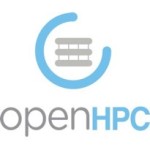An interesting use of HPC technologies is in the area of understanding the propagation of radio frequency energy in an outdoor environment. “Applications of this type need to be completed in seconds to minutes to be useful. Since the tracing of each ray is independent of another ray, this type of application can be distributed easily among the many cores of the Intel Xeon Phi coprocessor.”
Archives for 2015
NetApp to Acquire SolidFire for All-Flash SSDs
Today NetApp announced it has entered into a definitive agreement to acquire SolidFire for $870 million in cash. Founded in 2010, SolidFire is a market leader in all-flash storage systems built for the next-generation data center where simple scaling, set-and-forget management, assured performance and multi-tenancy, and cloud economic models are driving new market growth.
Piz Kesch: The Making of a GPU-based Weather Forecasting System
Thomas Schulthess from CSCS presented this talk at the Nvidia booth at SC15. “On October 1, 2015 “Piz Kesch”, a Cray CS-Storm system with NVIDIA K80 GPUs became operational at CSCS on behalf of MeteoSwiss. In this talk, we will discuss the hardware-software co-design project behind this most cost and energy efficient system for numerical weather prediction.”
Call for Doctoral Dissertation Colloquium Abstracts: HPCS 2016
The 2016 International Conference on High Performance Computing & Simulation (HPCS 2016) has issued its Call for Doctoral Dissertation Colloquium Abstracts. The mission of HPCS is to address, explore and exchange information on the state-of-the-art in high performance and large scale computing systems, their use in modeling and simulation, their design, performance and use, and their impact. The Conference will be held on July 18 – 22, 2016 in Innsbruck, Austria.
Building A Real-Time, Closed Loop fMRI Data Analysis System for Neuroscience Experiments
Prof. Kai Li from Princeton presented this talk at the Intel HPC Developer Conference at SC15. “Full correlation matrix analysis (FCMA) is an unbiased approach for exhaustively studying interactions among brain regions in functional magnetic resonance imaging (fMRI) data from human participants. In order to answer neuro-scientific questions efficiently, we are developing a closed-loop analysis system with FCMA on a cluster of nodes with Intel Xeon Phi coprocessors. In this talk, we will discuss our current results and future plans.”
Video: SGI Looks to Zero Copy Architecture for HPC and Big Data
In this video from SC15, Dr. Eng Lim Goh from SGI describes how the company is embracing new HPC technology trends such as new memory hierarchies. With the convergence of HPC and Big Data as a growing trend, SGI is envisions a “Zero Copy Architecture” that would bring together a traditional supercomputer with a Big Data analytics machine in a way that would not require users to move their data between systems.
Podcast: Top 10 Ways Intel Will Drive HPC Democratization in 2016
The use of High Performance Computing continues to grow in the enterprise and beyond. In this podcast, James Reinders from Intel describes how Intel will continue to drive HPC democratization in 2016. “At Intel, our passion to help drive the democratization of HPC is exemplified by many things. Here is my list of ten things which caught my attention as being most significant as we enter 2016.”
Video: TACC Powers Stampede Supercomputer with Dell Servers and Intel Omni Path
In this video, Tommy Minyard from TACC describes how Dell helped develop the 9.6 Petaflop Stampede supercomputer for scientific computing. “The Texas Advanced Computing Center supports the University of Texas System and National Science Foundation researchers with the newest version of their Stampede High Performance Computing cluster. Stampede uses Dell PowerEdge servers, Intel Xeon processors and the new Dell Networking H-Series switches and adapters based on Intel Omni-Path Architecture. These newly implemented technologies greatly reduce latency, optimize traffic flow, and give Stampede a peak performance of 10 petaflops.”
Is HPC Heading Towards Openness, Chaos, or a Split?
“To be successful in high-performance computing (HPC) today, it is no longer enough to sell good hardware: vendors need to develop an ‘ecosystem’ in which other hardware companies use their products and components; in which system administrators are familiar with their processors and architectures; and in which developers are trained and eager to write code both for the efficient use of the system and for end-user applications. No one company, not even Intel or IBM, can achieve all of this by itself anymore.”
JYU Sets World Record for Pore-scale Flow Simulations
An interdisciplinary research team from JYU in Finland has set a new world record in the field of fluid flow simulations through porous materials. The team, coordinated by Dr. Keijo Mattila from the University of Jyväskylä, used the world’s largest 3D images of a porous material–synthetic X-ray tomography images of the microstructure of Fontainebleau sandstone, and successfully simulated fluid flow through a sample of the size of 1.5 cubic centimeters with a submicron resolution.











